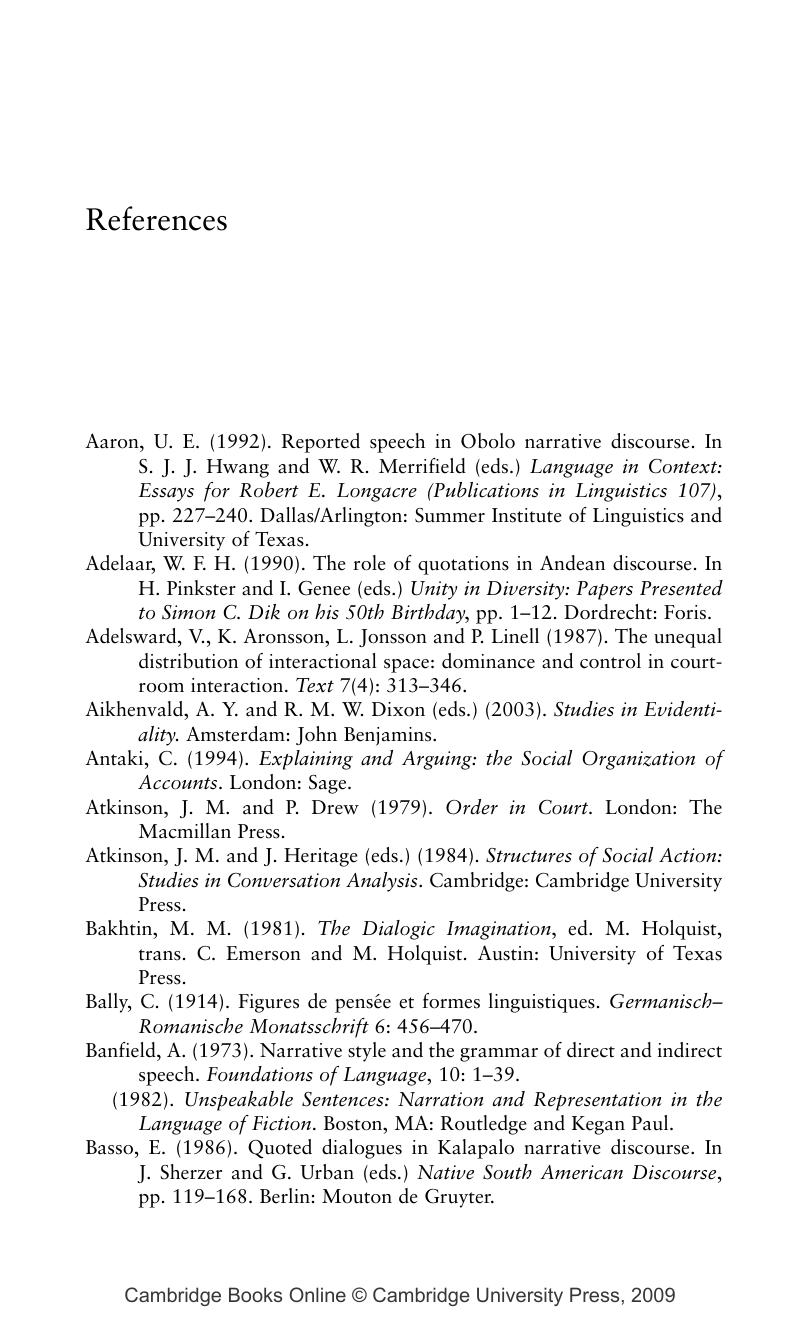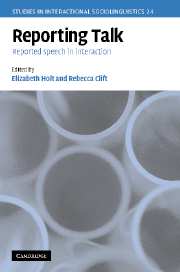Book contents
- Frontmatter
- Contents
- List of contributors
- Acknowledgements
- Transcription conventions
- 1 Introduction
- 2 Interactive Footing
- 3 ‘I'm eyeing your chop up mind’: reporting and enacting
- 4 Assessing and accounting
- 5 Getting there first: non-narrative reported speech in interaction
- 6 Reported thought in complaint stories
- 7 Designing contexts for reporting tactical talk
- 8 Active voicing in court
- 9 Speaking on behalf of the public in broadcast news interviews
- 10 The dead in the service of the living
- References
- Index
- References
References
Published online by Cambridge University Press: 22 September 2009
- Frontmatter
- Contents
- List of contributors
- Acknowledgements
- Transcription conventions
- 1 Introduction
- 2 Interactive Footing
- 3 ‘I'm eyeing your chop up mind’: reporting and enacting
- 4 Assessing and accounting
- 5 Getting there first: non-narrative reported speech in interaction
- 6 Reported thought in complaint stories
- 7 Designing contexts for reporting tactical talk
- 8 Active voicing in court
- 9 Speaking on behalf of the public in broadcast news interviews
- 10 The dead in the service of the living
- References
- Index
- References
Summary

- Type
- Chapter
- Information
- Reporting TalkReported Speech in Interaction, pp. 270 - 283Publisher: Cambridge University PressPrint publication year: 2006



